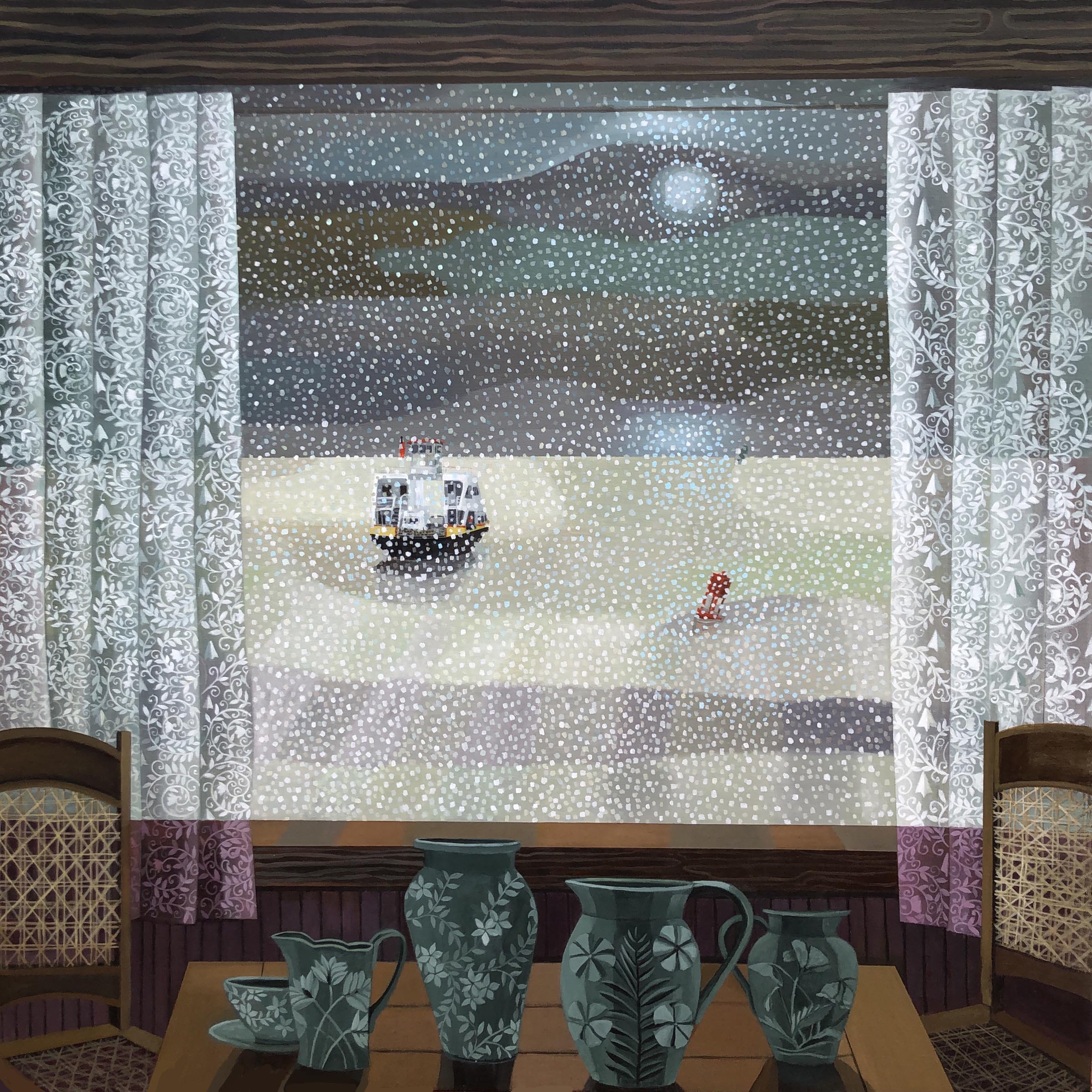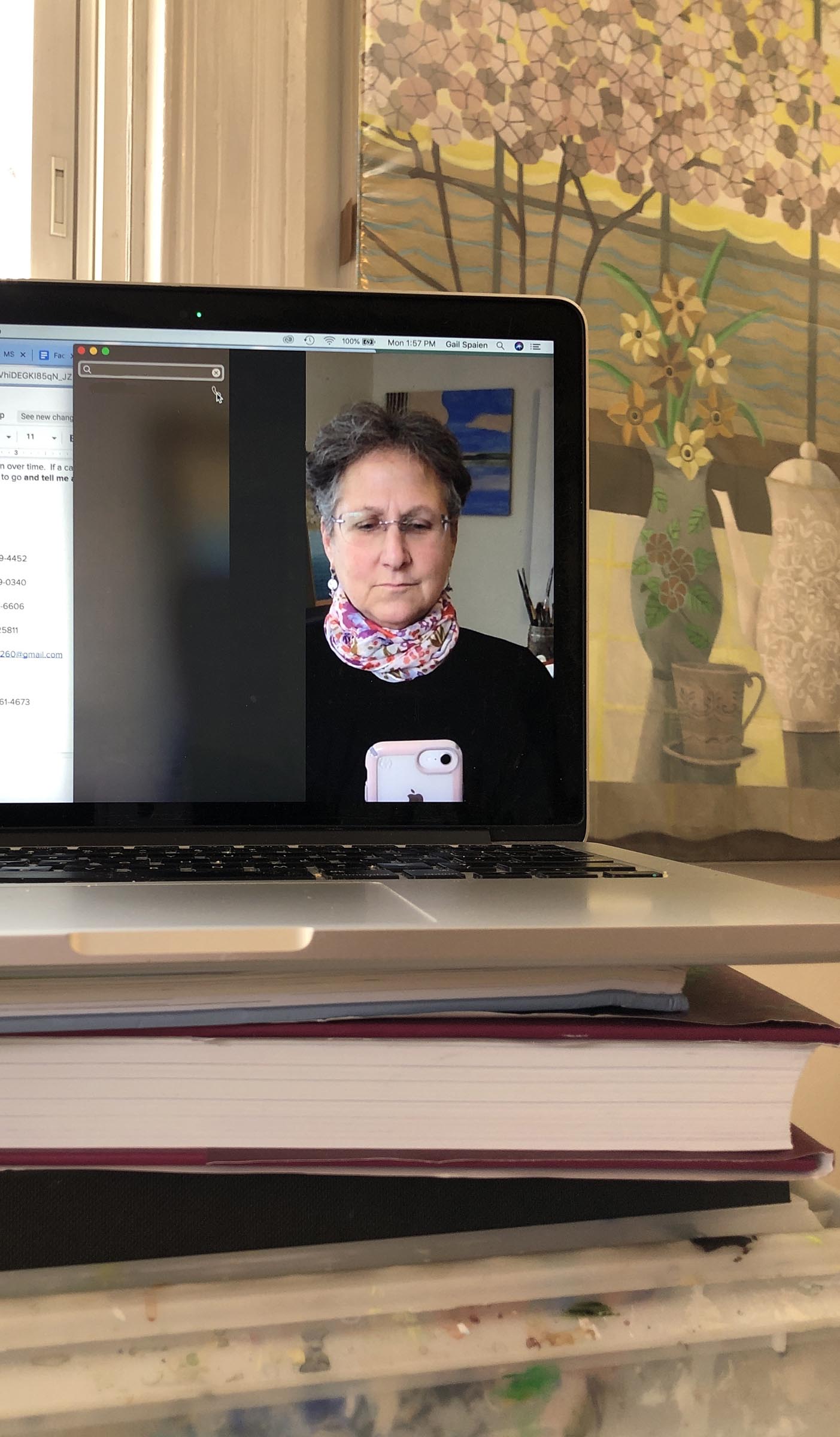
How did you get into making art?
I grew up in a home with two parents who were visual people who loved art and culture. They got joy out of arranging their domestic world. My dad owned a department store… everything was ordered there. By color, by kind… and my mom was an elegant woman who liked her home and wardrobe to be put together. They loved to shop for the right object, the right fabric, the right color. I grew up in a project centered home. My mom loved to make things. She made paintings, did needlepoint or crewel and made very large, intricate collages. My dad was an amateur photographer. We had a dark room in the basement. He was always doing a building project with my uncles who were construction workers. And he had a place in the basement where he made inventions. He gardened. Both my parents were artists in their own ways. My parents exposed me to culture. They took me to Broadway shows in NY. They listened to classical music and Broadway soundtracks alongside Frank Sinatra and Sergio Mendez on the record player in the den. They brought me to museums. The Wadsworth Atheneaum in Hartford was my introduction to painting. Early American portraiture and the Hudson River Landscape painters inform my current work. My studio has been in my home for the last 7 or 8 years. Painting is integrated into my daily routine. I cook, I clean, I go for a walk, I paint. Quoting Laurie Fendrich in an article she wrote for Two Coats of Paint (July 2020, “What Good is Abstract Painting Now”) she says in , ” what goes on in my studio ….. is, in effect, an ordinary activity that has to do with arranging colored shapes.” For me this is also the case. Painting is an ordinary activity that is an integrated part of my daily life. It allows me to think and a place to put my mind.
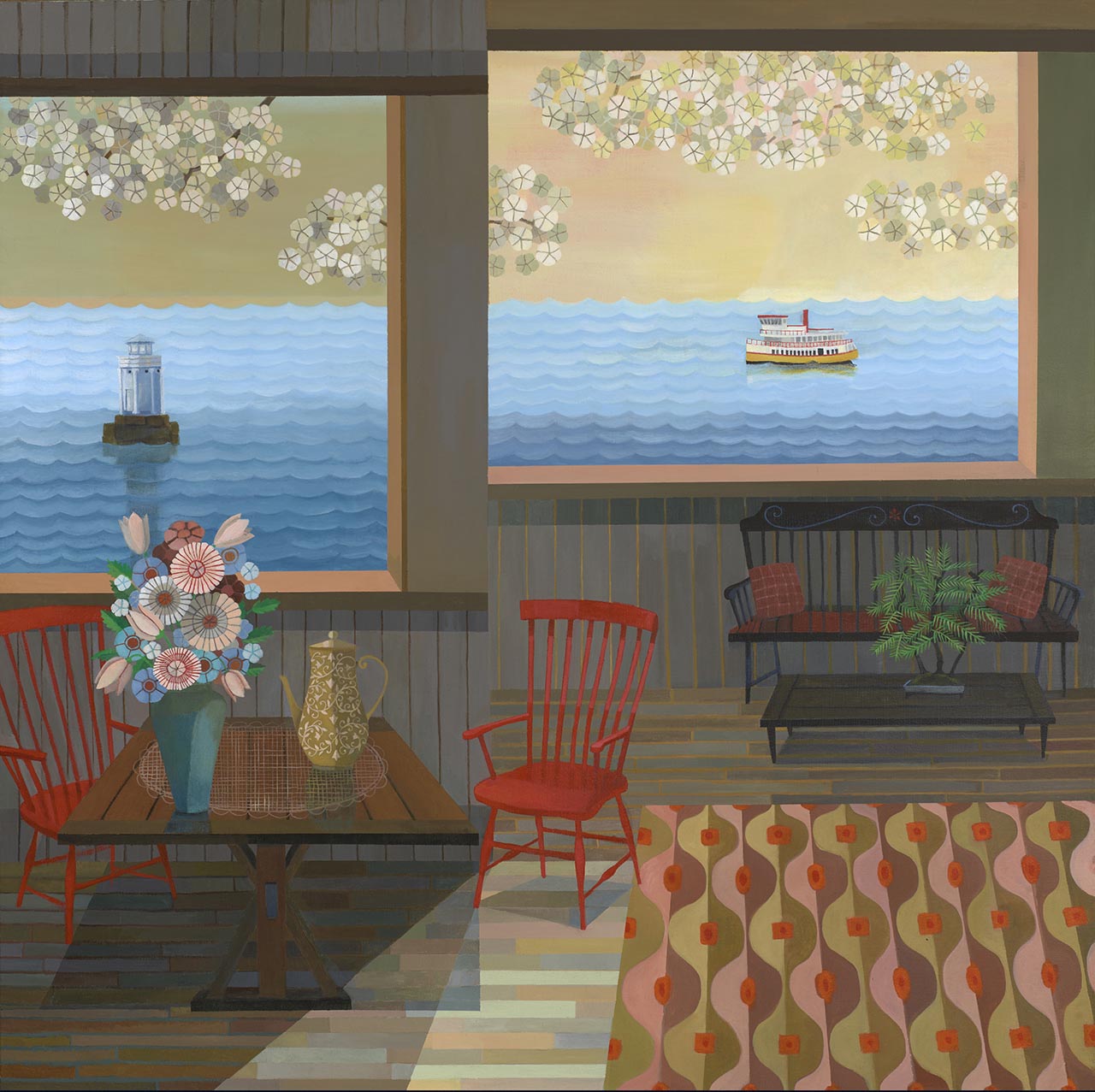
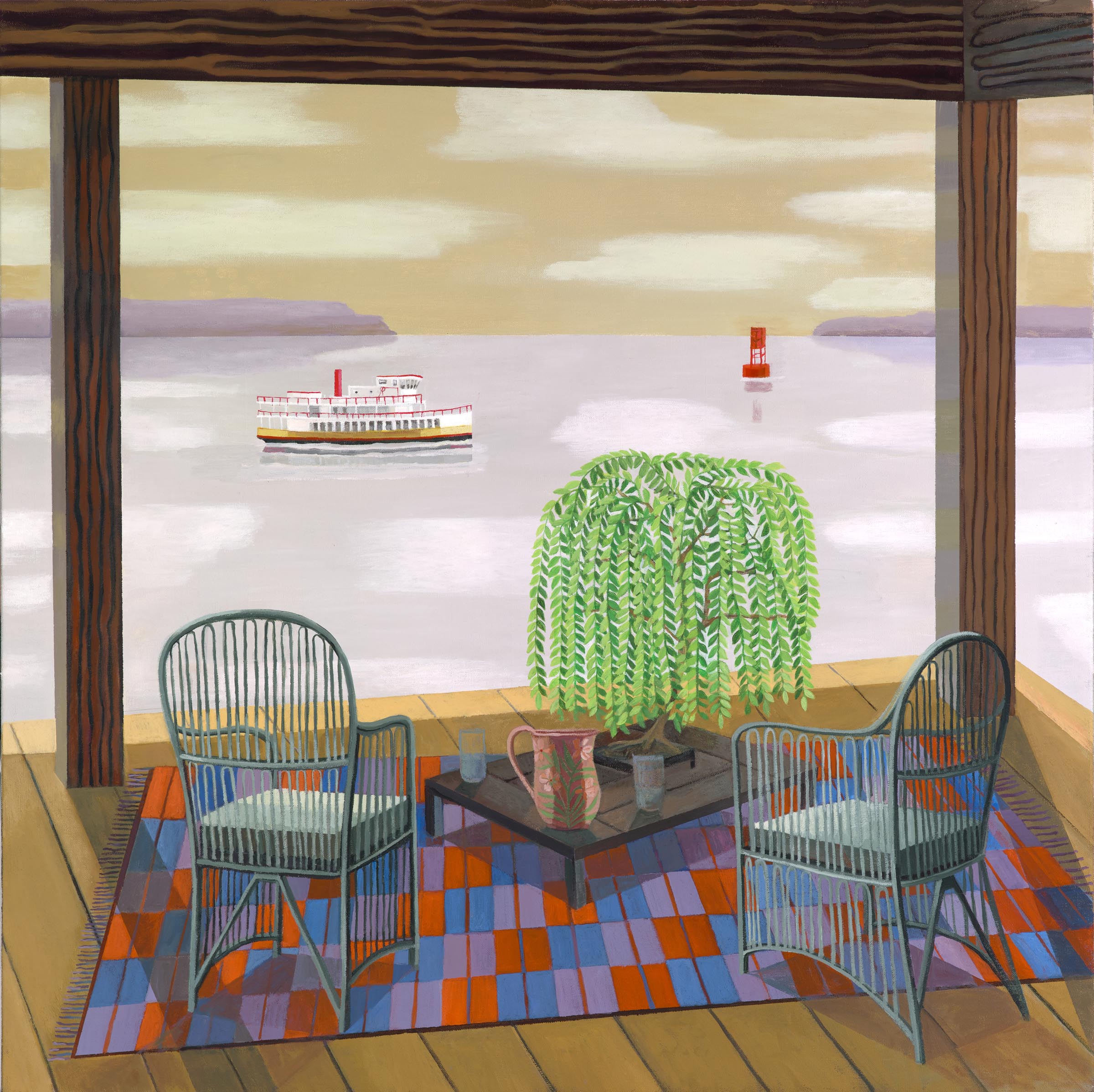
What are you currently working on?
I just completed work for a solo show at the Nancy Margolis Gallery. Upcoming, I have several studio visits scheduled and will be in a few group shows, one at the Maine Jewish Museum, “Skowhegan School Artists “, celebrating the 75th anniversay of the Skowhegan School of Painting and Sculpture. I am in an inbetween time in my studio. This is a necessary but uncomfortable stage of my creative process, one that, like clockwork, happens after working hard towards a show. This stage involves making bad paintings and doubting and being uncertain that I even know how to paint. As I plow through and continue to paint, I trust the process enough to know that I will ‘refill’ and find the next clear vision that will generate a new body of work. Getting through this stage involves patience, continuing to make bad paintings and a lot of drawing on my ipad. This stage also involves revisiting studio questions like: how do I paint water, weather, gravity; how do I experiment more radically with value contrast; how to visually transate the sensation of anchored and groundless. I look at a lot of images, I take pictures, I look through a folder where I keep reference material. I think a lot about the fact that paintings are windows and optical experiences that can transform ones environment and psychological state. I imagine a world I want to see as I paint. I try to come up with new questions that might get me to see something new. Many of the works made for the NMG show were done on in a rented house on Peaks Island in Maine. I decided to do a self-designed residency there with a view of the ocean and the horizon so that I could study the landscape more closely in order make painting decisions that were based more on observation than on imagination. The main struggle that I am having right now, as I transition from one body of work to another…. my paintings cannot compete with what I am seeing outside my window. Historically, this is not a new problem and I this question, how to translate the light and space of the natural world in a painting, propells artists to keep trying. I will be moving back to my home studio in a few weeks. I will switch up the scale of the work and rebalance a bit so I am working more from imagination and less from observation so that the impossibilty of translating nature might become more possible.
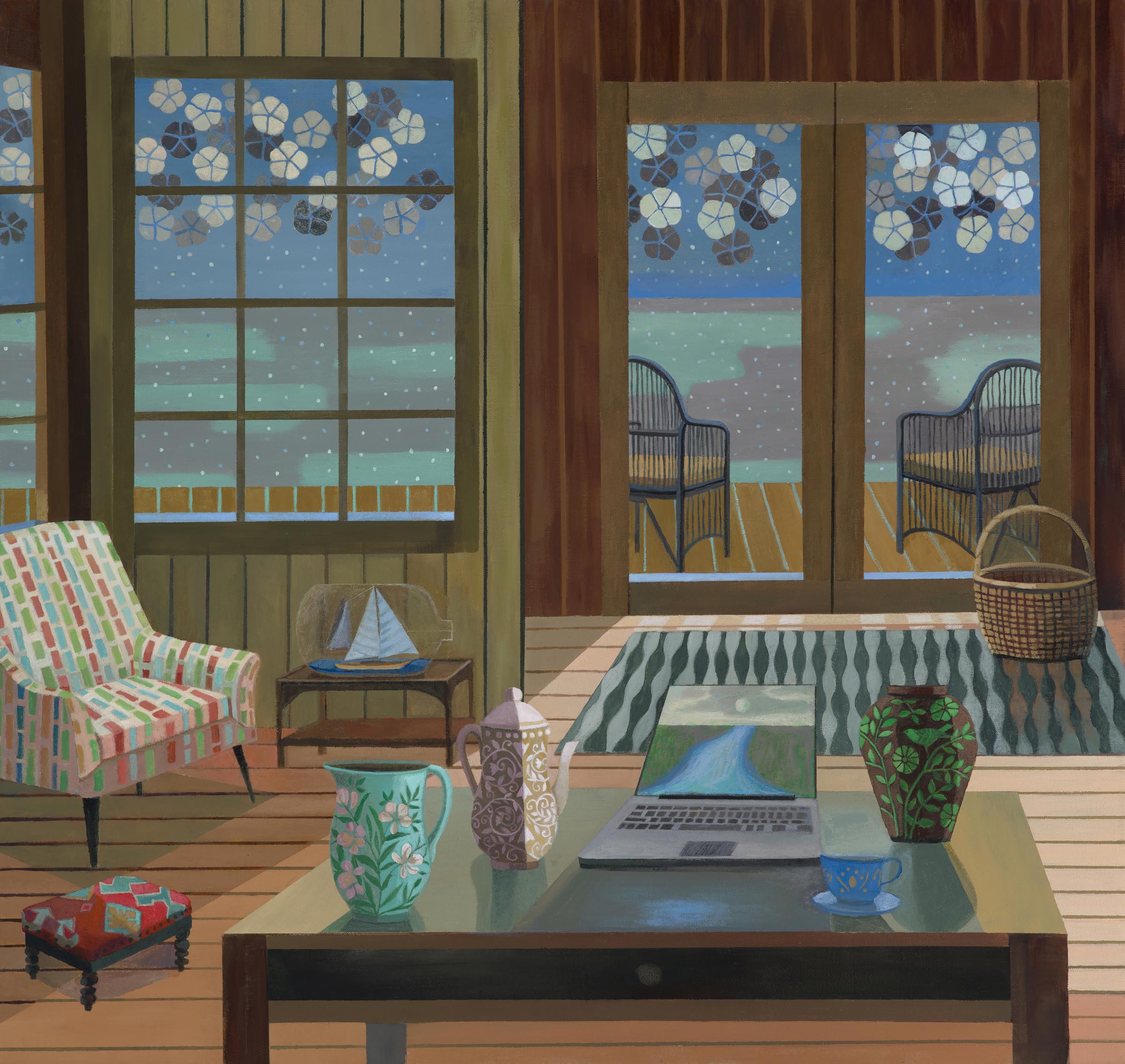
I think of each new body of work like a volume or book that is part of a larger collection.
Gail Spaien
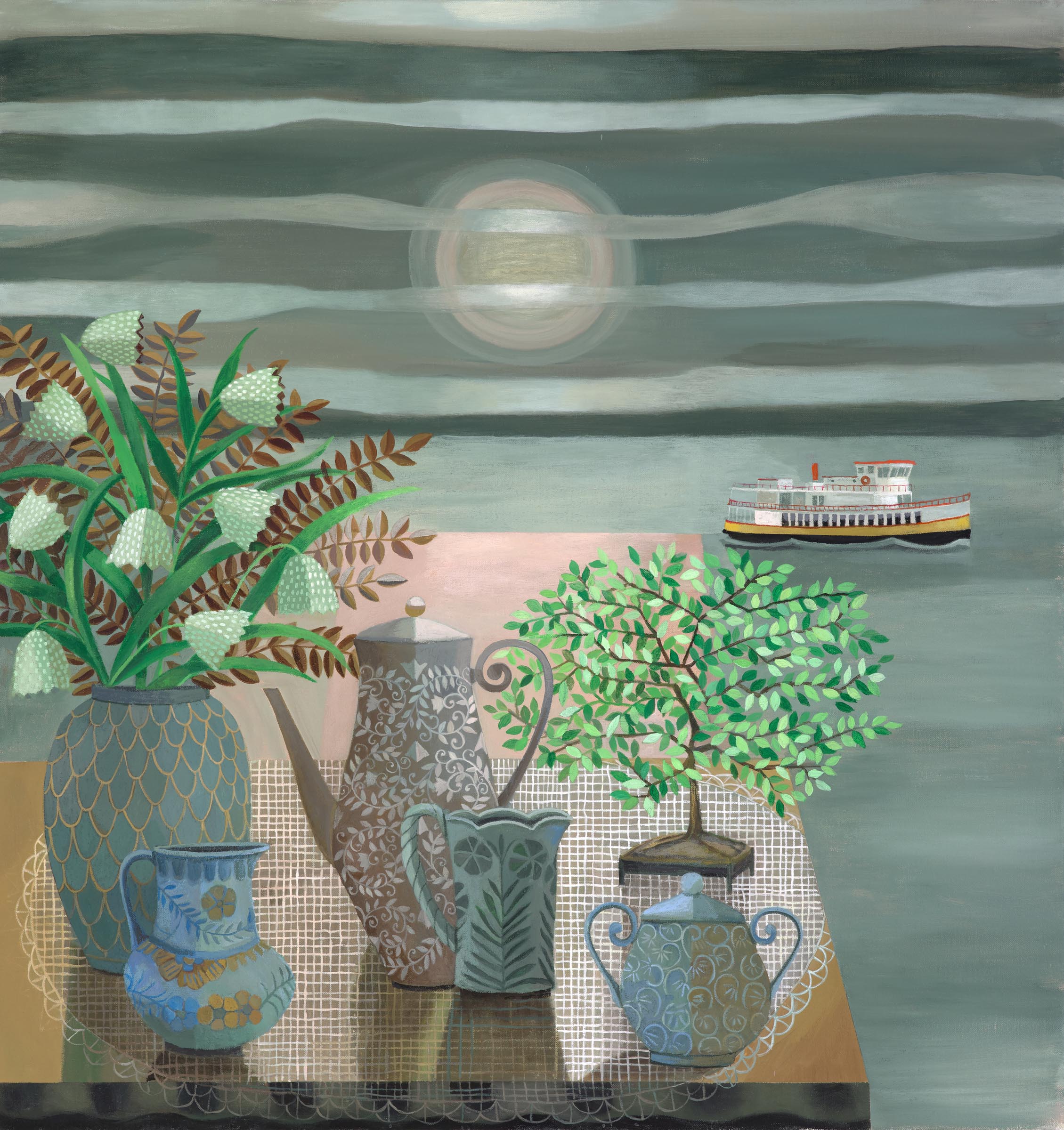
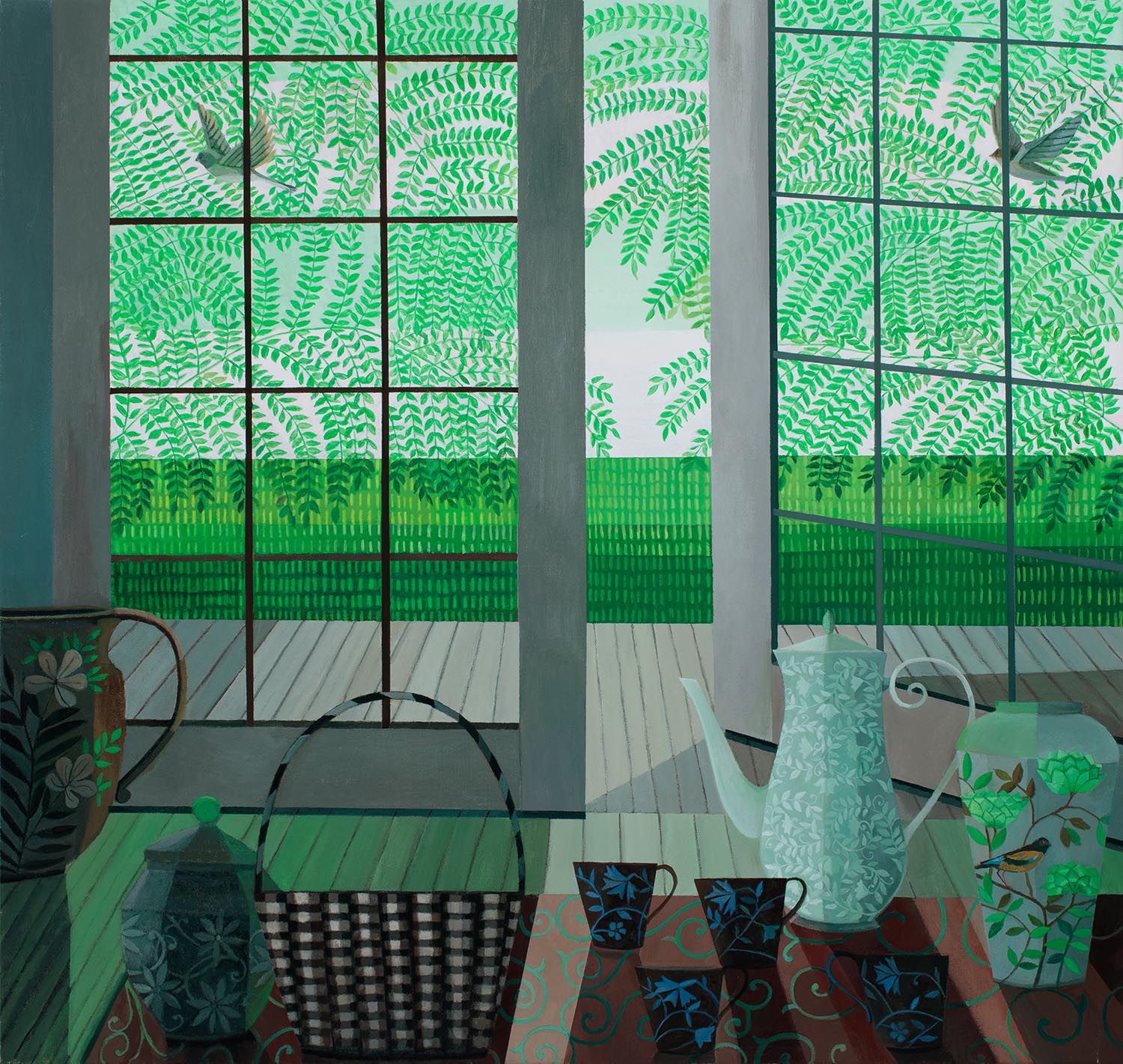
What inspired you to get started on this body of work?
My geographic location and the landscape I see on a daily basis have been persistent subjects in my work. So in this regard I consider each new series to be a continuation rather than something new. My paintings tell a story of place and season. As an observer of my surroundings, I selectively catalog — a red chair from the Hadden house on Cliff island, the ferry motoring across Casco Bay, the lighthouse that marks the turn in the channel towards the Portland waterfront. I unify the subject of my work around the cycles of nature, daily activity and routine. Evoking a feeling of suspended time and space, my use of scale, proportion, pattern and subtly shifting color are visual elements that translate sensations of buoyancy and depth. The horizon line is an expansive edge that anchors. As objects of contemplation [the] paintings ask the viewer to sit and gaze out — an action that counterbalances the noise that so often renders the invisible substance of daily life unobservable. I paint from both observation and via osmosis, meaning that I see, feel and experience my surroundings and then translate that spacial situation from bodily memory rather than observation. I start each painting with geometry, dividing up the picture plane into precise segments. I consider what symbol/object I want to paint, like a ferry boat or a chair, and then I think about time of day, or whether I want to do an an exterior without an interior, or a particular color palette. The work evolves with no plan in mind. If I am working toward a show, I aim to create a collection that visually holds together. The intersection of pictoral and optical is a painting problem that engages me the most. I combine flat and deep space to create an optical experience. This causes the tension in the work. That the viewer toggles between two perceptual experiences. This causes one to look longer and to understand that the painting is a complex object that goes beyond subject matter. It is the geometry and pattern combined with pictoral space and a horizon line that causes the viewer to experience and be concious of the fact that they are gazing out. I don’t think about the picturesque too much I think more about the word ‘idealized’ and also ‘utopia’. About the impossibility of utopia… and that utopia is not all that it is cracked up to be. Too homogenous. Too static. Not actually a desirable state. I am conscious of the perplexity that life is an experience of groundlessness. We are held to a planet by forces of gravity as we hurdle through infinite space. So in a sense I am talking about the poetry and poignancy of that….. being anchored in a floating world.
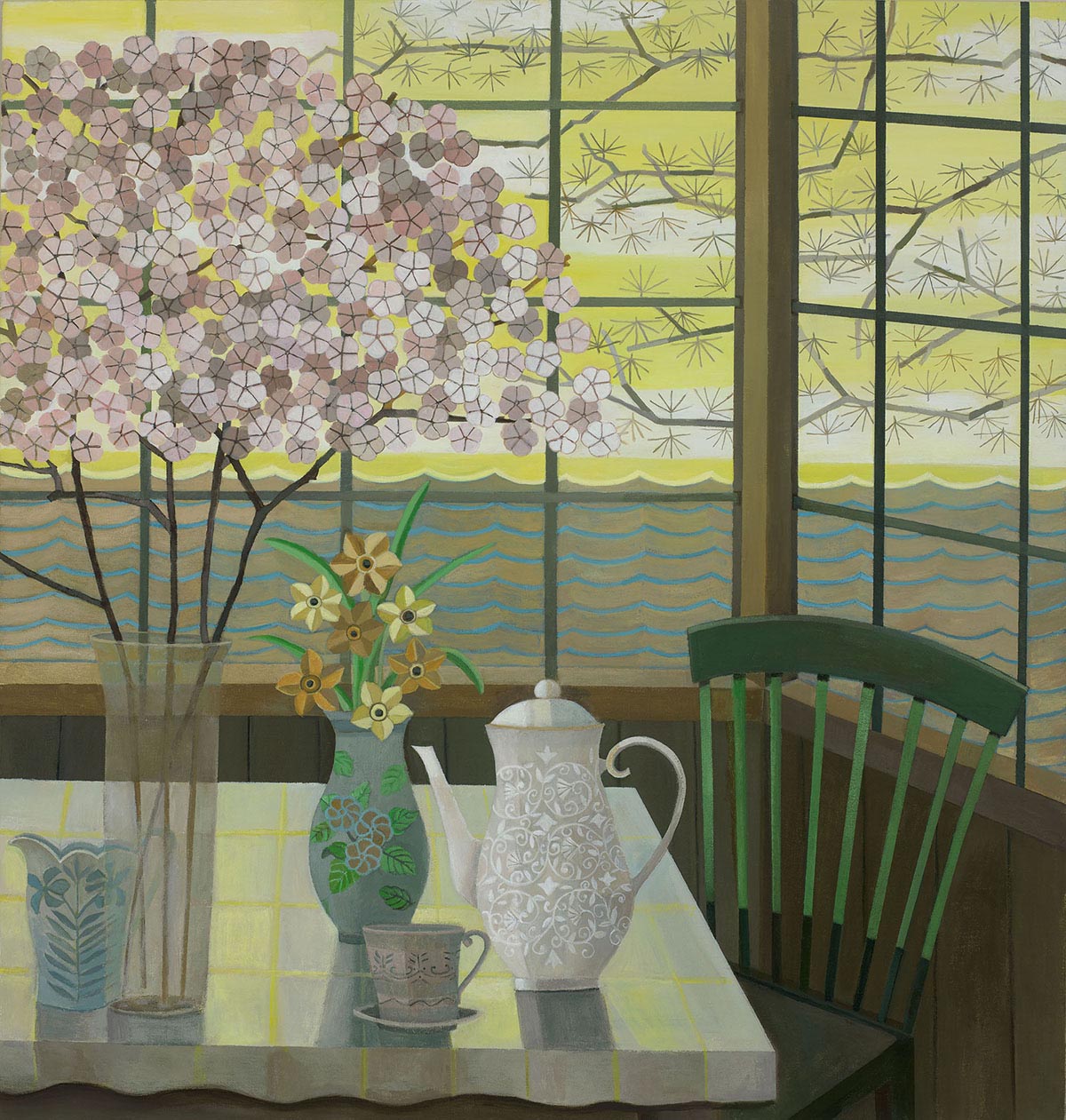
Do you work on distinct projects or do you take a broader approach to your practice?
I think of each new body of work like a volume or book that is part of a larger collection. Each new series gets an overaching title. Then each painting within that series gets that title and a number. I view my studio practice as a continum, each series feeding the next, and so a broader approach is probably the correct term. Having said that, I do tend to think of the ‘exhibition’ as a curated project. I approach each exhibition opportunity as a site specific project that may include wall painting or other objects alongside the paintings to create a more involved environment for the viewer.

What’s a typical day like in your studio?
My best typical day starts with a cup of coffee, looking at my calendar, looking through Hyperallergic, reading something that buoys me emotionally, staring out the window. Then I do administrative type work. That could mean anything from briefly checking emails to doing studio visits with the grad students at Maine College of Art where I teach or reading and commenting on thesis papers. The morning is also a time when I write. It is my clearest time of day for any thinking I have do do that is complex. Then I do something physical; walk, swim, clean, garden… Around 1:30 I go to the studio. I paint until around 5:00, make dinner, have dinner with my husband, then back to the studio until around 9:00 or so. I paint every day. I also schedule time throughout the year when I do not go into the studio and do not look at art.
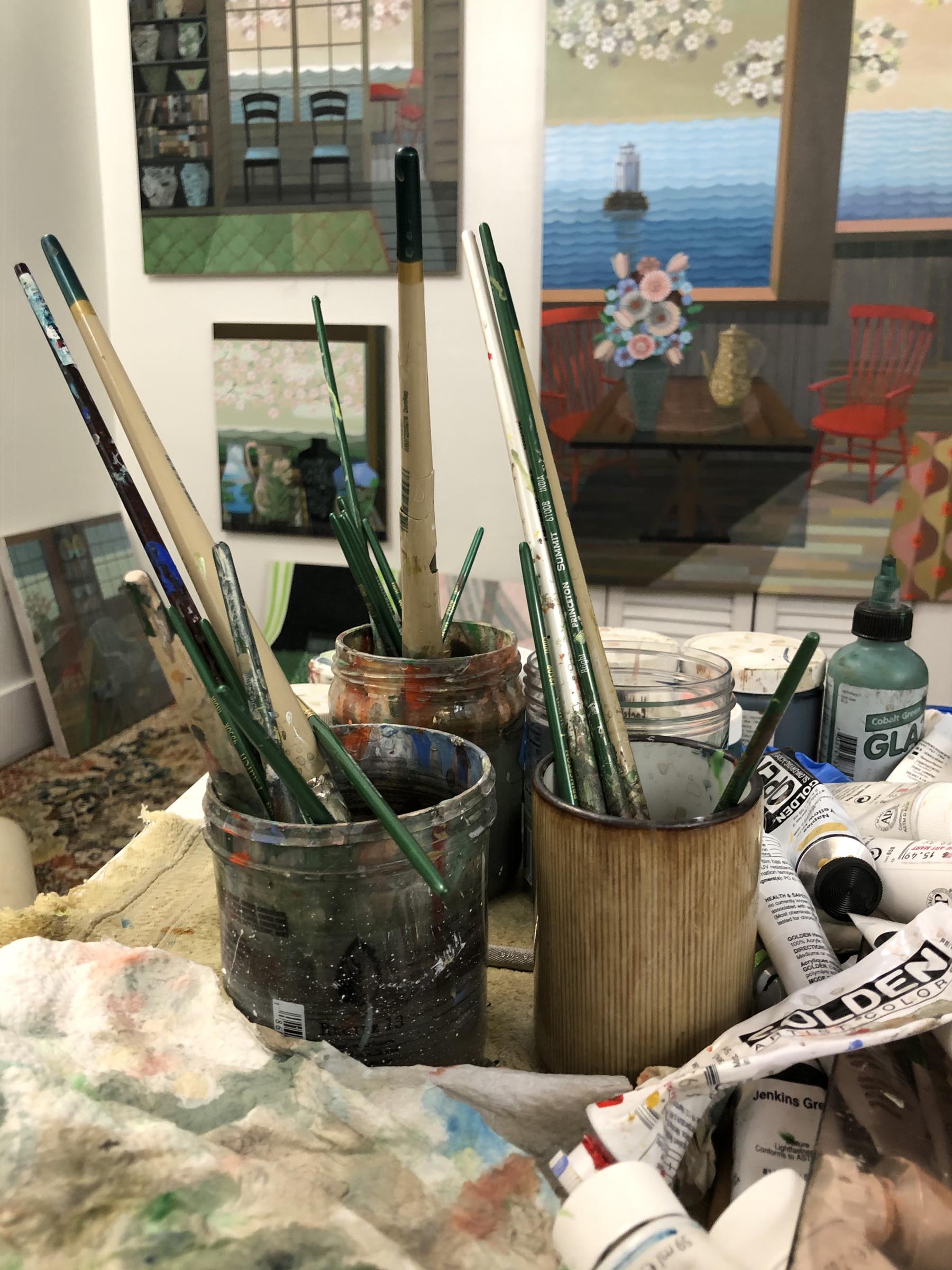
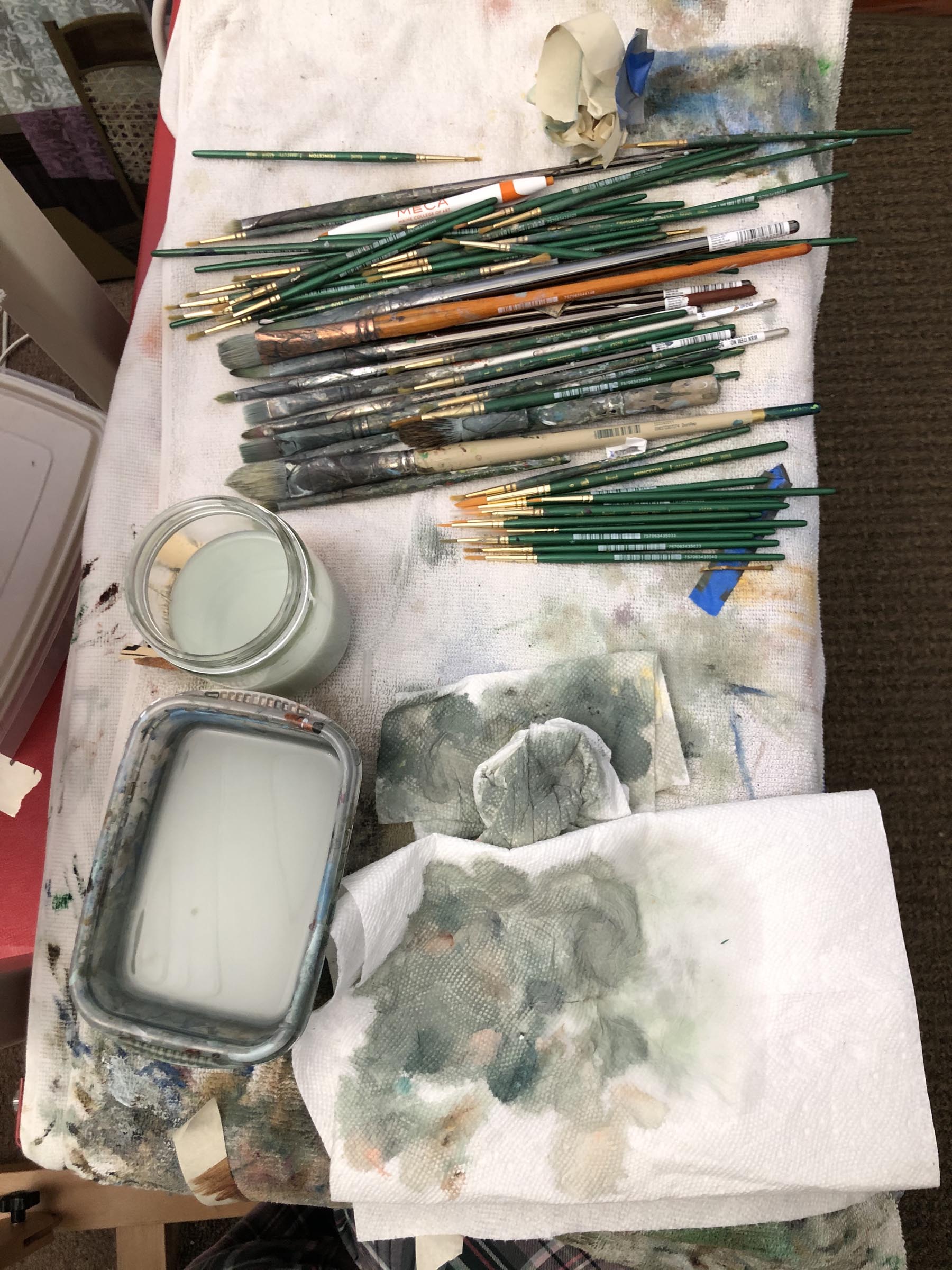
Who are your favorite artists?
There are a lot. Contemporary artists and inspriations that I look at: embroidery and paint by number – I did both as a young person and these activities still strongly affect how I use paint and color; Early American painting and furniture, Early American Samplers and textiles, Persian miniatures, Dutch still life, animation, including Walt Disney and Hayao Miyazaki, Fitz Henry Lane and Martin Johnson Heade, Henri Rousseau’s “The Sleeping Gypsy”, Japanese Ukioye prints, the artists of the Pattern and Decoration movement, botanical watercolors, Grandma Moses, Etel Adnan, Adrian Ghenie, Mathew Wong, Peter Doig, Maureen Gallace, April Gornik, Vija Celmins, Shirley Kandea, Joanthan Lasker and Thomas Noskowski, Enrique Martinez Celaya, Chris Ofili, Paula Modersohn-Becker and the Early American Modernists like Milton Avery, Helen Torr, Florene Stettheim and Arthur Dove, the Hudson River painters, and many of the works that are curated on the IG account “Between Table and Moon”. Repetitive handwork, genre painting and landscape that I see on a daily basis are core sources of my work. Instagram and the Zoom grid is has had a huge impact on the work I am making. I use geometry and make spaces within spaces. Not only does my work acknowledge that I see, share and reflect visual information in art from around the globe, scrolling through Instagram and looking at the Zoom screen there are views within views within views, within views. This has become a standard method of looking and an element of my work. I have come to no conclusions about this but am registering that there is a system of sharing contemporary and historic visual language that is at play through instagram. I go for a lot of walks and look at my local landscape which is Casco Bay. I look at a lot of painting. I work in my garden.
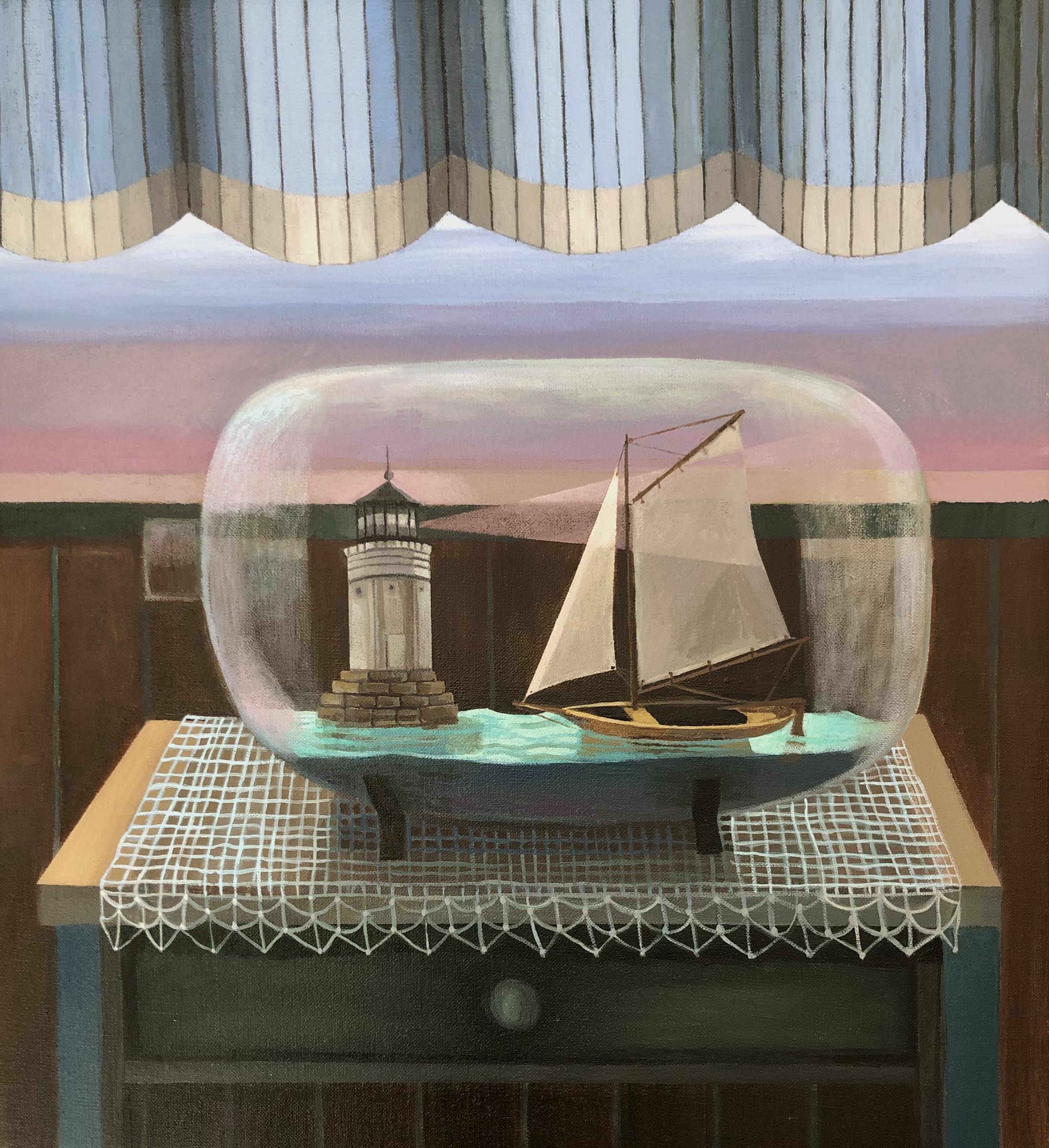
Where do you go to discover new artists?
Working in both the painting department and the graduate school at Maine College of Art I am exposed to new artists all the time by students and colleagues. MECA’s visiting artist program is also a great source of exposure. I look at instagram, Hyperallergic, and when Covid isn’t around I am in NYC a few times a year. In the last several years have travelled to see the Venice Biennale quite a few times. Since Covid, I am on several mailing lists of museums, colleges and publications (like the Brooklyn Rail) that promote artist talks and panel conversastions. I often attend those talks while I am in the studio.
Gail Spaien is an artist based in South Portland, ME who was recently shortlisted for The Hopper Prize. To learn more about the artist:











